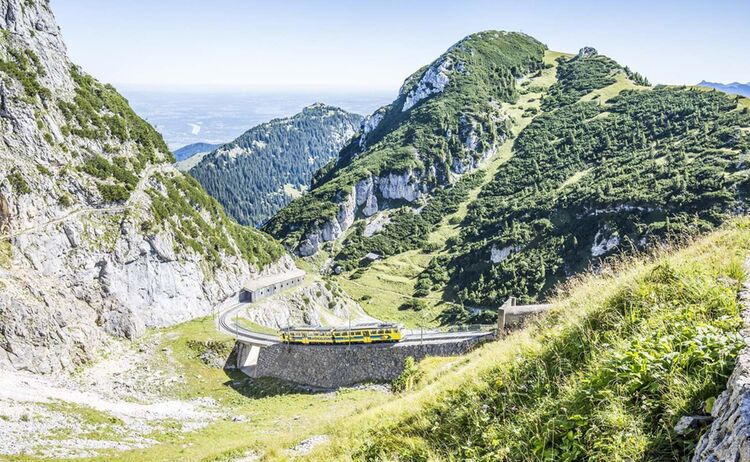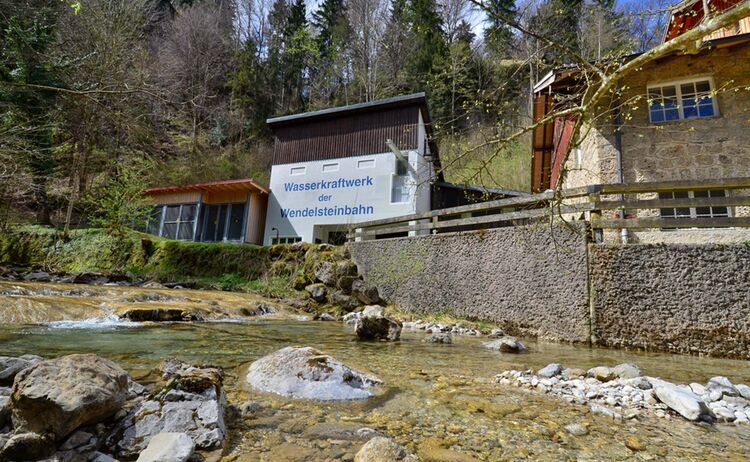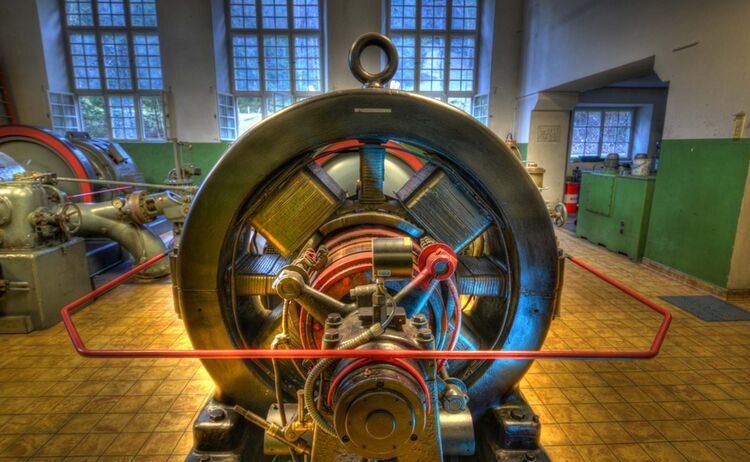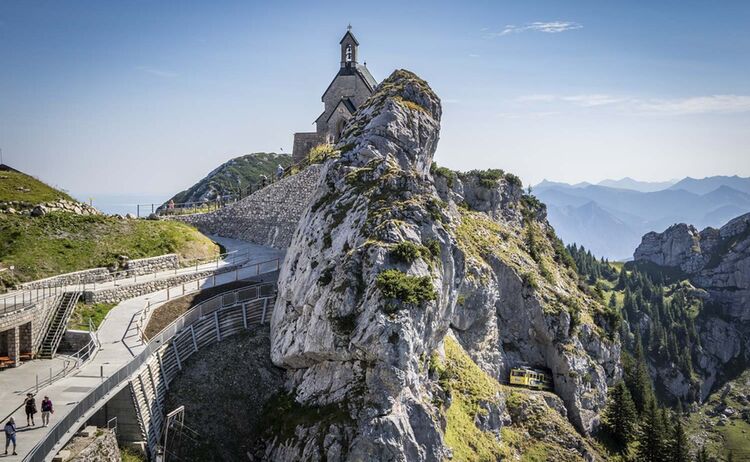Wendelstein railway and hydroelectric power station
The Wendelstein rack railway in Brannenburg can look back on more than 100 years of expertise in the field of electromobility. When it was commissioned in 1912, it was considered a technical sensation. At a time when comparable means of transport were still powered by steam, the forward-thinking builder Otto von Steinbeis insisted on operating "his" rack railway electrically. As there was still no widespread electricity supply in the rural area at the turn of the century, the industrial pioneer had a hydroelectric power station with two turbines built at the foot of the Wendelstein. They generate the direct current that the railway has needed for the uphill journey ever since. Even in the early days of electrical engineering, railway operation was designed in such a way that the braking energy of the train travelling downhill could be used for the simultaneous ascent of the opposite train. The electricity generated during the descent is fed back into the grid via the overhead line.
A ride on Germany's oldest high mountain cog railway up the 1,838 m high Wendelstein is certainly one of the most impressive experiences along the German Alpine Road. In both summer and winter, it takes around 30 minutes from the Brannenburg valley station to reach the high alpine terrain in comfort, with breathtaking views included. There is a lot to discover and experience on the Wendelstein: From the self-guided show cave to Germany's highest church and the observatory at the summit. The popular summit and panorama trail reveals interesting facts about the geological features of the mountain and the region. A look through the Viscope illustrates what it looked like here during the Würm Ice Age. Back at the mountain station, it's worth making a detour to the panorama restaurant.



